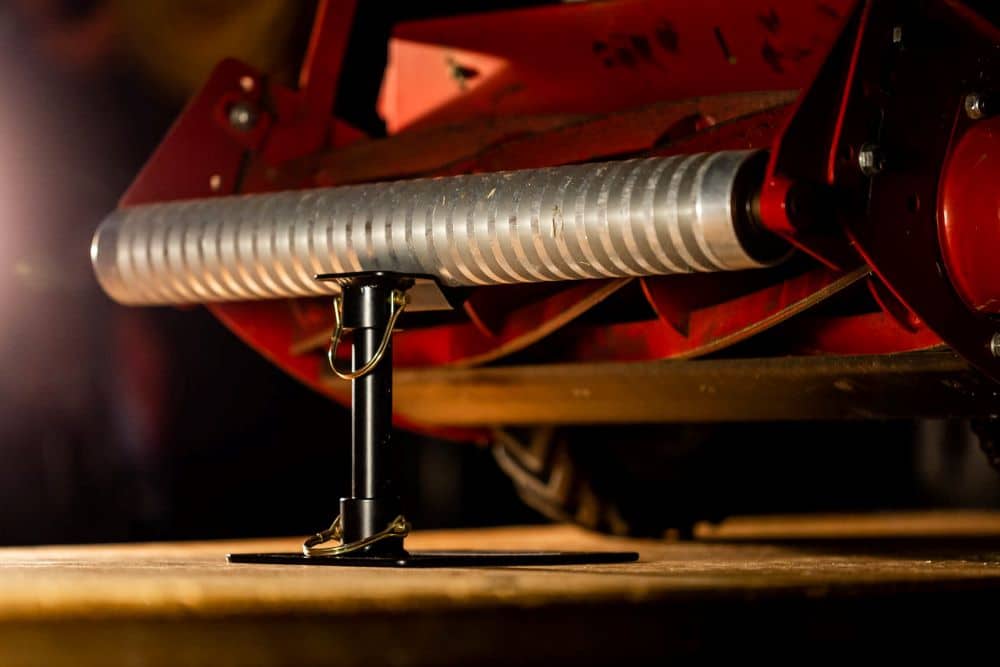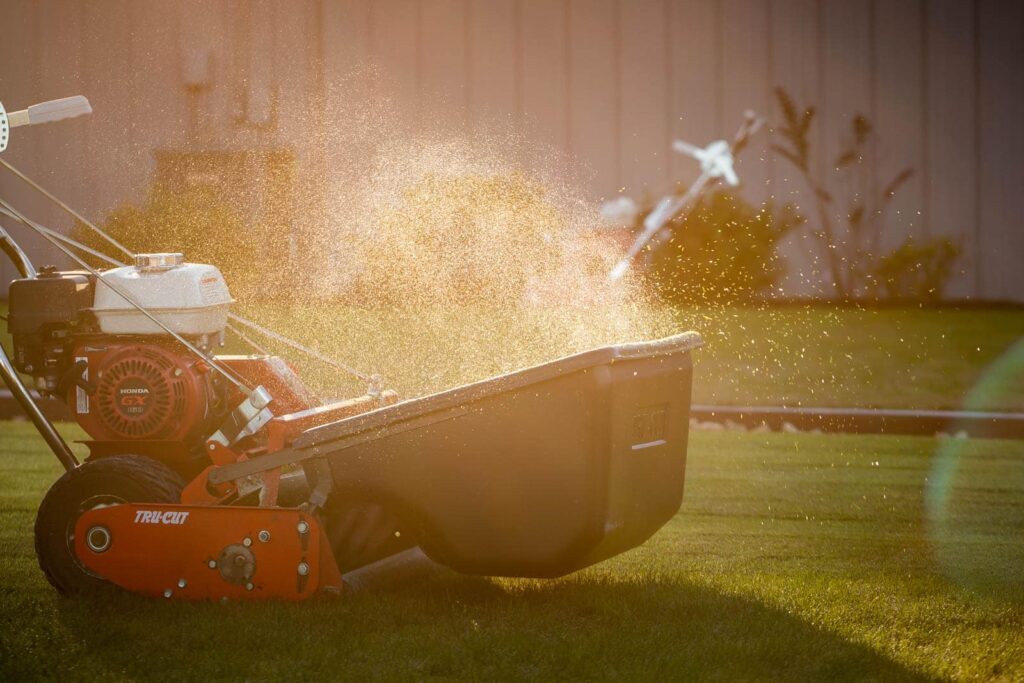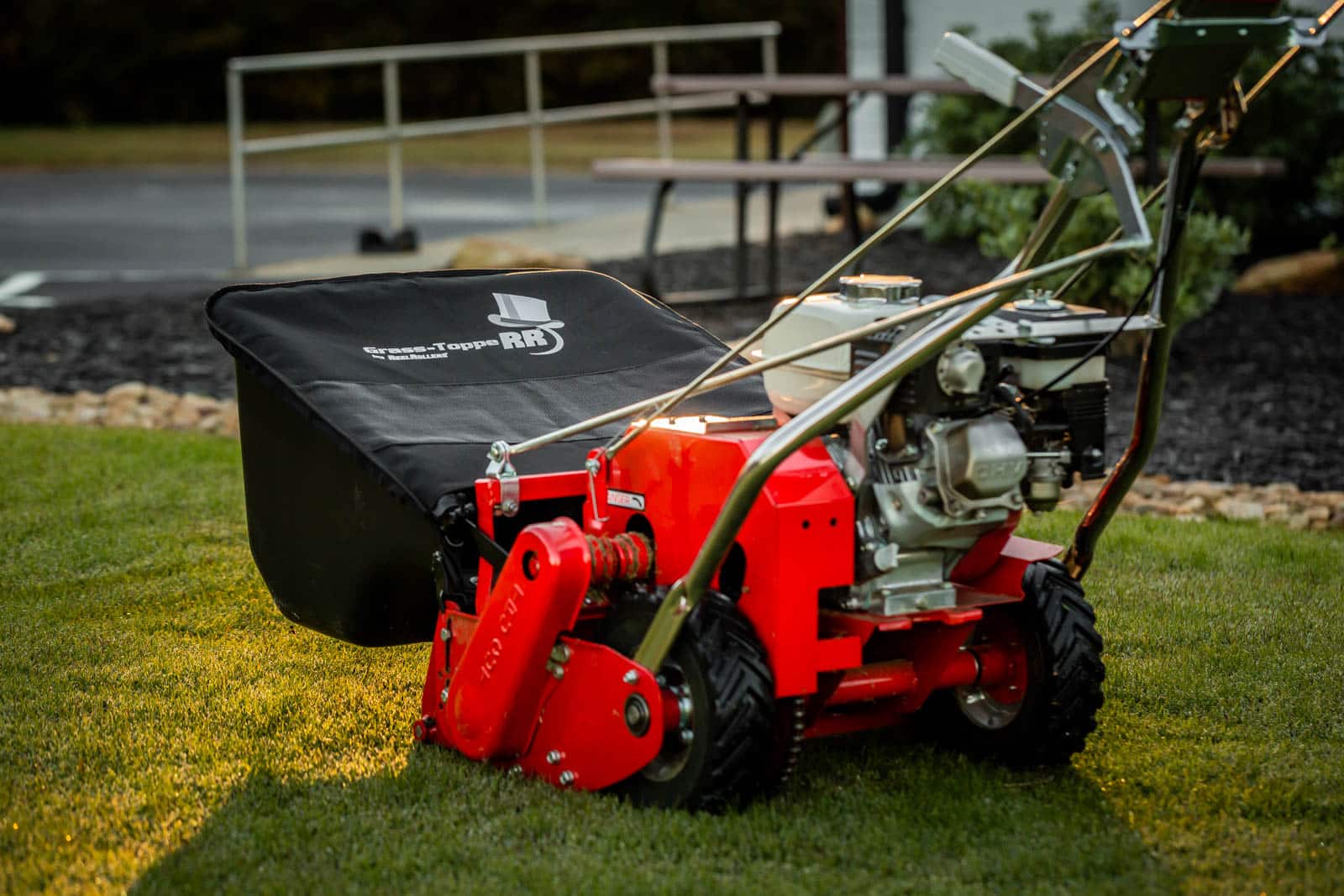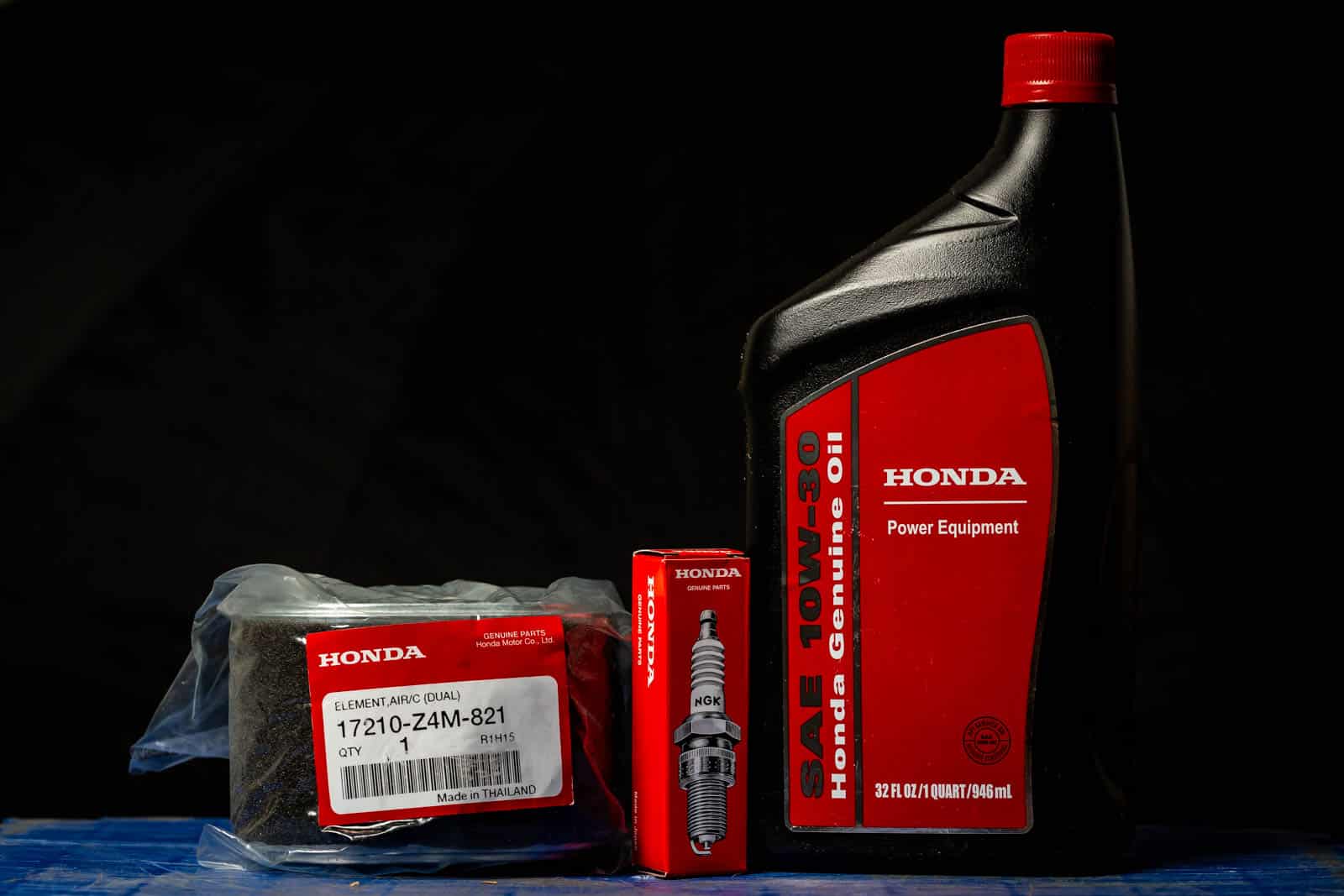
Rapid Shipping
Experienced Team

Lawn scalping is crucial in revitalizing your lawn, especially when dealing with dead grass and thatch. In this guide, we will walk you through the process of lawn scalping using a reel mower. This method helps establish a new cutting height for the season, exposes the soil to the sun for early green-up, and sets the stage for dense new growth.
Scalping, in layman’s terms, is getting your mower as close to the dirt as possible. It involves lowering the mower blades to the lowest setting without hitting the soil. Cutting low lets the sunshine in, and warm-season grass loves that. This process opens up the soil and turf to warmer temperatures, providing the necessary conditions for grass to wake up from its winter dormancy and start thriving.

The perfect moment to scalp your lawn depends on your local climate. If the temperatures are climbing faster than a squirrel up a tree, then it’s time to consider firing up the mower. Typically, scalping is a practice for warm-season grasses that go into dormancy over the winter. Ideally, scalping your lawn takes place prior to the grass showing green. For most, this is during the months of February to April. Scalping your lawn prior to February exposes the roots to potential damage if you have a multi-day hard freeze — but most folks who have warm-season grasses rarely get freezes long enough to damage the roots.
In transition zones or northern parts where the last frost or freeze date is still a few weeks away, patience is crucial. The dormant grass is your lawn’s winter armor, shielding it from those late-season frosts or freezes. Cut that protective layer too soon, and you’re leaving your soil exposed to Mother Nature’s icy temper.
Aim to scalp the lawn on a dry and non-windy day. Wet dormant grass adds another layer of challenge when mowing and will just prolong the process of clipping off the dormant grass.
When it comes out of dormancy, a scalped lawn promotes lower, denser grass that squeezes out many weeds trying to grow. So, let your grass do its job, and you’ll spend less time battling weeds and more time enjoying your lawn.

Scalping isn’t for the faint of heart, especially regarding your mower blades. Embrace the fact that hitting the dirt at lower mowing levels is necessary, but if you are plowing the soil, you should raise your height of scalping to a level where you are close to the soil but only dipping into it a few spots across the whole yard where it may be unlevel. Your blades will get a battering, so there is no point in putting new ones on or backlapping until after the scalp.
If you’ve got some seasoned blades that have seen more lawns than a retired landscaper, consider them your sacrificial lambs for the scalp. Save the shiny, new blades for the regular mowing duties and let the veterans handle the dirty work.
Lubricating the reel with vegetable oil before scalping minimizes wear on the reel bearings and components, reducing heat and potential damage to the blade, especially when mowing brown grass with reduced moisture content.
The recommended cutting height for scalping with a reel mower varies from lawn to lawn, depending on how smooth the lawn is. The goal is to scalp down 1/4″ to 1/2″ below where you want to maintain the turf throughout the season. Set it at 3/4″, and if you are far from hitting the soil on your first pass, drop it down another 1/4″ until you are as low as you can go without plowing dirt.
Different grass types have varying optimal cutting heights. Research the specific type of grass in your lawn and set the mower height accordingly. For example, warm-season grasses like Bermuda or zoysia have lower cutting height requirements than cool-season grasses like Kentucky bluegrass or fescue.
Pro Tip: If your lawn is significantly overgrown, consider gradually lowering the cutting height in multiple passes rather than making a drastic change in a single mowing session. This can help prevent stress to the mower (and you!) and allow for a more controlled scalping process.
Before mowing the entire lawn, check your reel-to-bedknife contact. For scalping, you want the reel to have little to no contact with the bedknife. During the green season in mowing, you want the reel to bedknife to cut paper.
Remove debris like sticks, leaves, or large rocks from the lawn. This will prevent damage to your mower and ensure an even cut. Equip yourself with a sturdy lawn rake to gather and remove larger debris. Raking also helps lift the grass blades, making it easier for the reel mower to cut at an even height.
Attach a catcher or the Reel Rollers Grass Topper to collect the debris as you mow. The Grass Topper will collect up the grass without letting it blow everywhere. This helps prevent thatch buildup and keeps your lawn looking tidy.
If you come across areas with significantly overgrown grass or uneven growth and you have a rotary mower, a way to save time and effort is to cut your dormant grass as low as your rotary mower will go. This will suck up debris from the lawn and cut the reel mowing work in half. Reel mowers are designed for use on short turf, so they won’t be the best at getting really long grass cut down to size.
Before you begin mowing, ensure that the gas-powered reel mower has a full fuel tank. This prevents interruptions during scalping, allowing for continuous and efficient mowing.
Choose a mowing pattern that ensures complete coverage of the lawn. Overlapping each pass slightly helps avoid missed areas and ensures an even scalping.
Start mowing your lawn, moving the reel mower slowly and deliberately. Remember to overlap each pass slightly to ensure complete coverage. Having a front roller from Reel Rollers on your mower will help level the ground and prevent scalping from being too harsh
Keep a consistent speed while mowing to achieve an even cut across the entire lawn. Avoid rushing, as this can lead to uneven scalping and potential damage to the grass.
Monitor your grass catcher regularly and empty it as needed to prevent it from becoming too heavy and affecting the mower’s performance. Additionally, emptying the catcher keeps the lawn neat and prevents thatch buildup.
When encountering areas with significantly overgrown grass or uneven growth, consider making additional passes and slowing down your ground speed when you encounter higher grass.
Adhere to safety guidelines for operating your reel mower. This includes wearing appropriate safety gear, keeping hands and feet away from the mower blades, and following any specific safety instructions provided.
If you have a large lawn, consider taking breaks as needed to avoid fatigue. Staying physically alert during the mowing process ensures better control and precision.
Continue mowing until the entire lawn is scalped. A thorough and complete scalping promotes uniform growth and helps achieve the desired benefits, such as thatch removal and enhanced sunlight exposure.
After scalping, the best practice is to obtain a soil test to see if your lawn is nutrient-deficient or needs the pH raised or lowered. Soil test results take two to three weeks, and you should apply the recommended nutrients the moment you see green grass starting to push up. If you don’t have a soil test, now would be a good time to throw a good balanced fertilizer of 10-10-10 or 13-13-13 onto the turf to help feed future growth.

Following a scalp in February or early March, schedule blade sharpening and any necessary repairs in April before the first mow of the season. This ensures your mower is in optimal condition for the upcoming challenges.
For those who prefer hands-on maintenance, post-scalping tasks include backlapping blades, checking belts, chains, and screws, and replacing the spark plug, air filter, and oil to ensure your mower is ready for the mowing season. Our engine service kits include all the items you need to prep your reel mower.
Lawn scalping with a reel mower is a critical step in lawn preparation, helping to prepare the ground for optimal grass growth. By following these steps and utilizing the right equipment, you can achieve a well-prepared lawn that is ready for the next stages of lawn domination. Remember to assess the results and plan for additional steps, such as leveling and adding topsoil for a comprehensive lawn improvement.